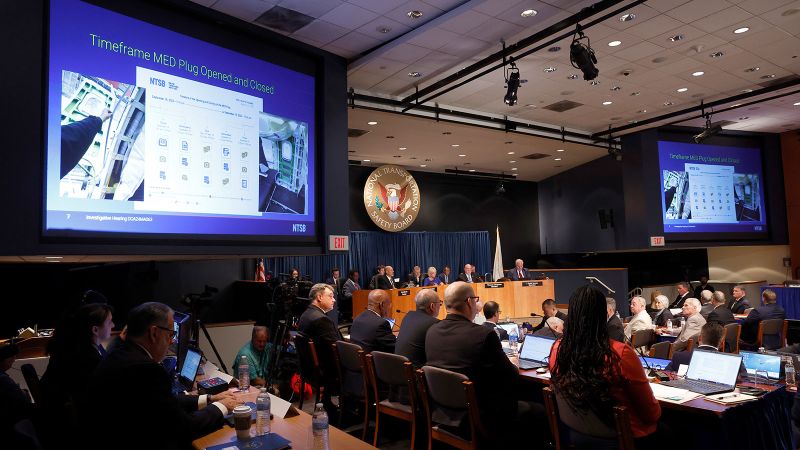
Boeing still doesn’t know who removed and reinstalled the part that blew off an Alaska Airlines jet
CNN
The door plug blowout on a 737 Max has brought all types of unwanted attention and legal problems to Boeing since the January 5 Alaska Airlines flight. This week Boeing tried its best to put the best possible face on its actions.
Seven months of investigations. Nearly 10 hours of hearings. And yet neither Boeing nor the National Transportation Safety Board know how a 737 Max was delivered to Alaska Airlines without the four bolts needed to keep a door plug in place. What is known: Boeing’s procedures and training – by employees, and by safety investigators – has drawn enormous skepticism and criticism from regulators. That was on full display in the first day of a two-day hearing. The NTSB called a rare public hearing to examine the near tragedy on the January 5 Alaska Air flight in which a door plug blew out, leaving a gaping hole in the side of the plane – and in Boeing’s already battered reputation. The door plug was removed at the Boeing factory in Renton, Washington, last September so that problems with some rivets could be repaired. But the necessary paperwork for that temporary door plug removal was apparently never created. So when workers replaced the door plug temporarily, other workers were unaware that bolts needed to be reinstalled, said Elizabeth Lund, senior vice president of quality for Boeing Commercial Airplanes. But under questioning from the NTSB Lund admitted that it’s not clear who and when that door plug was put in place. That lack of information concerned members of the NTSB. “We don’t know and neither do they and that’s a problem,” NTSB Chair Jennifer Homendy told reporters during a break in the hearing. To avoid the problem in the future, Boeing is considering adding a warning light in the cockpit that would alert pilots if the door plug moves even a little bit – well before it could blow out in the kind of accident that occurred on the Alaska Air flight.

Travis Tanner says he first began using ChatGPT less than a year ago for support in his job as an auto mechanic and to communicate with Spanish-speaking coworkers. But these days, he and the artificial intelligence chatbot — which he now refers to as “Lumina” — have very different kinds of conversations, discussing religion, spirituality and the foundation of the universe.





















 Run 3 Space | Play Space Running Game
Run 3 Space | Play Space Running Game Traffic Jam 3D | Online Racing Game
Traffic Jam 3D | Online Racing Game Duck Hunt | Play Old Classic Game
Duck Hunt | Play Old Classic Game










